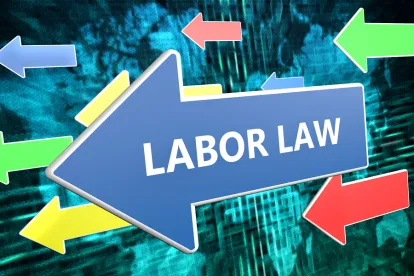The National Labor Relations Board has announced publication of a proposed rule that will establish a new and far narrower standard for determining whether an employer can be held to be the joint-employer of another employer’s employees. The rule described in the Notice of Proposed Rulemaking published in the Federal Register on September 14, 2018, will, once effective essentially discard the Board’s test adopted in Browning-Ferris Industries (“Browning-Ferris”) during the Obama Administration, which substantially reduced the burden to establish that separate employers were joint-employers and as such could be obligated to bargain together and be responsible for one another’s unfair labor practices.
The Proposed New Standard
Under the proposed new rule, the Board will essentially return to the standard that it had followed from 1984 until 2015. As the Board explained when it announced the proposed new rule
Under the proposed rule, an employer may be found to be a joint-employer of another employer’s employees only if it possesses and exercises substantial, direct and immediate control over the essential terms and conditions of employment and has done so in a manner that is not limited and routine. Indirect influence and contractual reservations of authority would no longer be sufficient to establish a joint-employer relationship.
Under Browning-Ferris, the Board held that indirect influence and the ability to influence terms and conditions, regardless of whether exercised, could result in an employer being held to be the joint-employer of a second employer’s employees.
As a practical matter, the new standard should make it much more difficult to establish that a company is a joint-employer of a supplier or other company’s employees. The new standard will mean that a party claiming joint-employer status to exist will need to demonstrate with evidence that the putative joint-employer doesn’t just have a theoretical right to influence the other employer’s employees’ terms and conditions but that it has actually exercised that right in a substantial, direct and immediate manner.
This new standard is likely to make it much more difficult for unions to successfully claim that franchisors are joint-employers with their franchisees, and that companies are joint-employers of personnel employed by their contractors and contract suppliers of labor such as leasing and temporary agencies.
The New Standard Marks a Return to that Announced in Hy-Brand Industrial Contractors, Ltd.
As readers may recall, in December 2017, in Hy-Brand Industrial Contractors, Ltd. (“Hy-Brand”), in a 3-2 decision joined in by the Board Chairman Miscimarra and Members Emanuel and Kaplan, the Board overruled Browning-Ferris and adopted a standard that required proof that putative joint employer entities have actually exercised joint control over essential employment terms (rather than merely having “reserved” the right to exercise control), the control must be “direct and immediate” (rather than indirect), and joint-employer status will not result from control that is “limited and routine.”
Hy-Brand however, was short-lived. On February 26, 2018, in a unanimous decision by Chairman Marvin Kaplan and Members Mark Pearce and Lauren McFerren, the Board reversed and vacated Hy-Brand, following its finding that a potential conflict-of-interest had tainted the Board’s 3-2 vote in Hy-Brand.
The standard announced this week however marks an attempt by the Board to breathe life back into Hy-Brand.
What Happens Now?
Under the Administrative Procedures Act, the public and interested parties will now have sixty days to submit comments “on all aspects of the proposed rules” for the Board’s consideration.
Democratic Senators Elizabeth Warren, Kirsten Gillibrand, and Bernard Sanders previously announced in a May 2018 letter, when the Board indicated it was looking into rulemaking concerning the test for determining joint-employer, that it was their view that the same conflicts of interest that resulted in the Board’s decision to vacate Hy-Brand at least raised ethical concerns.
While there is nothing inherently suspect about an agency proceeding by rulemaking, it is impossible to ignore the timing of this announcement, which comes just a few months after the Board tried and failed to overturn Browning-Ferris, and appears designed to evade the ethical constraints that federal law imposes on Members in adjudications. The Board’s sudden announcement of rulemaking on the exact same topic suggests that it is driven to obtain the same outcome sought by Member Emanuel’s former employer and its clients, which the Board failed to secure by adjudication.
Given these considerations, it is quite foreseeable that opponents of the proposed rule may seek to at least delay, if not defeat the proposed rule’s taking effect by litigation.




 />i
/>i

